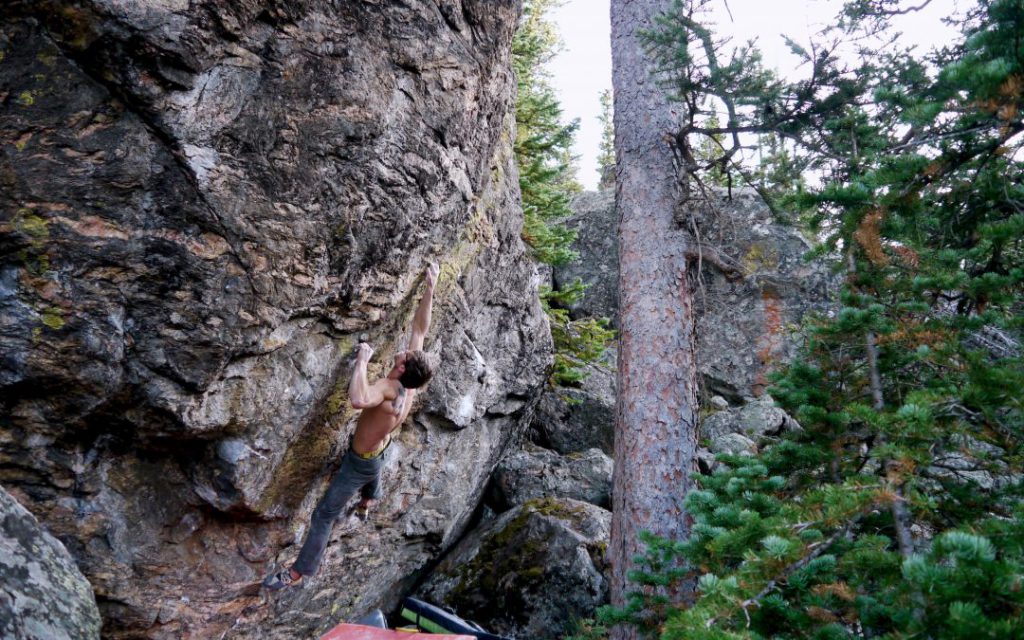Rock climbing is a tough sport, and not just because it is done with the added excitement of being at dangerous heights off the ground. Cuts and abrasions, dislocations, various ligament tears and tendonitis are all common things most climbers deal with from time to time. A British study of recreational rock climbers found that 40% of injuries occurred in the fingers, 16% in the shoulders, 12% in the elbows and carpal tunnel syndrome was found in about 25% of climbers.
Climbers know and love tape, especially when it comes to their hands, and for lots of pulley support in the fingers, for example, the right kind of tape is stiff and has very little give, the exact opposite of RockTape. So, how can this thin, flexible, very moveable tape help climbers?

-
- Finger support between sessions – most pulley injuries in the fingers start with microtrauma and partial tears that can be exacerbated by everyday, non-climbing activities. You aren’t going to tape up your hands with climbing tape for a day on your keyboard at the office, because that would suck! But, you can use RockTape lengthwise on fingers in spirals, or circumferentially around damaged pulleys to help give support while still maintaining full mobility. The compression may help keep some inflammation at bay, too. Because RockTape is so flexible and it is designed to move with your body, it can be really comfortable to wear off the rocks where normal climbing tape would not.
- Carpal tunnel syndrome – carpal tunnel syndrome symptoms are not fun, whether you’re getting mostly numbness and tingling, discomfort*, weakness, cramping, or the lovely cocktail of all of the above! Carpal tunnel symptoms in climbers can be true carpal tunnel syndrome affecting just the wrist and hand, but it can come from pump in the forearms creating compression in the median, ulnar and radial nerves, too. An effective adjunct to treating carpal tunnel syndrome can be taping with RockTape. This helps offload the muscles of the forearm and decompress the carpal tunnel area to relieve some of the symptoms. Here’s a great standard carpal tunnel syndrome taping method.
- Abrasions – between harnesses, packs and the act of dragging your body over craggy rocks itself, rock climbing is a challenge on your skin in certain areas. Pay attention when training and climbing and see where you tend to get scrapes and skin irritation and experiment with adding a strip of tape to this area about an hour before a climb. You don’t want to do this on your hands and fingers because it could reduce your grip, but this thin, stretchy tape is perfect for acting as a second-skin in other non-essential areas to make climbing more comfortable.
 Shoulders and upper back – during training or climbing, rock climbers can take a cue from what CrossFit athletes love about RockTape, and that is its ability to support shoulder movements and help keep the shoulder complex coordinated and working as a unit. Shoulder blade position, joint strength and using the upper back as well as the muscles of the arms to climb are essential to being efficient and safe when climbing. This standard shoulder application works great during training as well as climbing. If you feel like you have trouble keeping your shoulders in a good position, or engaging your back when using your upper body, then this is the one for you.
Shoulders and upper back – during training or climbing, rock climbers can take a cue from what CrossFit athletes love about RockTape, and that is its ability to support shoulder movements and help keep the shoulder complex coordinated and working as a unit. Shoulder blade position, joint strength and using the upper back as well as the muscles of the arms to climb are essential to being efficient and safe when climbing. This standard shoulder application works great during training as well as climbing. If you feel like you have trouble keeping your shoulders in a good position, or engaging your back when using your upper body, then this is the one for you.- Let’s talk elbows! Because of the heavy load on the hands and forearms, it’s easy for climbers to trash their elbows. Golfer’s elbow (medial epicondylitis), tennis elbow (lateral epicondylitis) and olecranon bursitis are all common in climbers. Here are taping applications for each of them, as well as a bonus spiral that you’ll need a partner’s help to apply, but can help with wrist, elbow and shoulder issues all at once!
